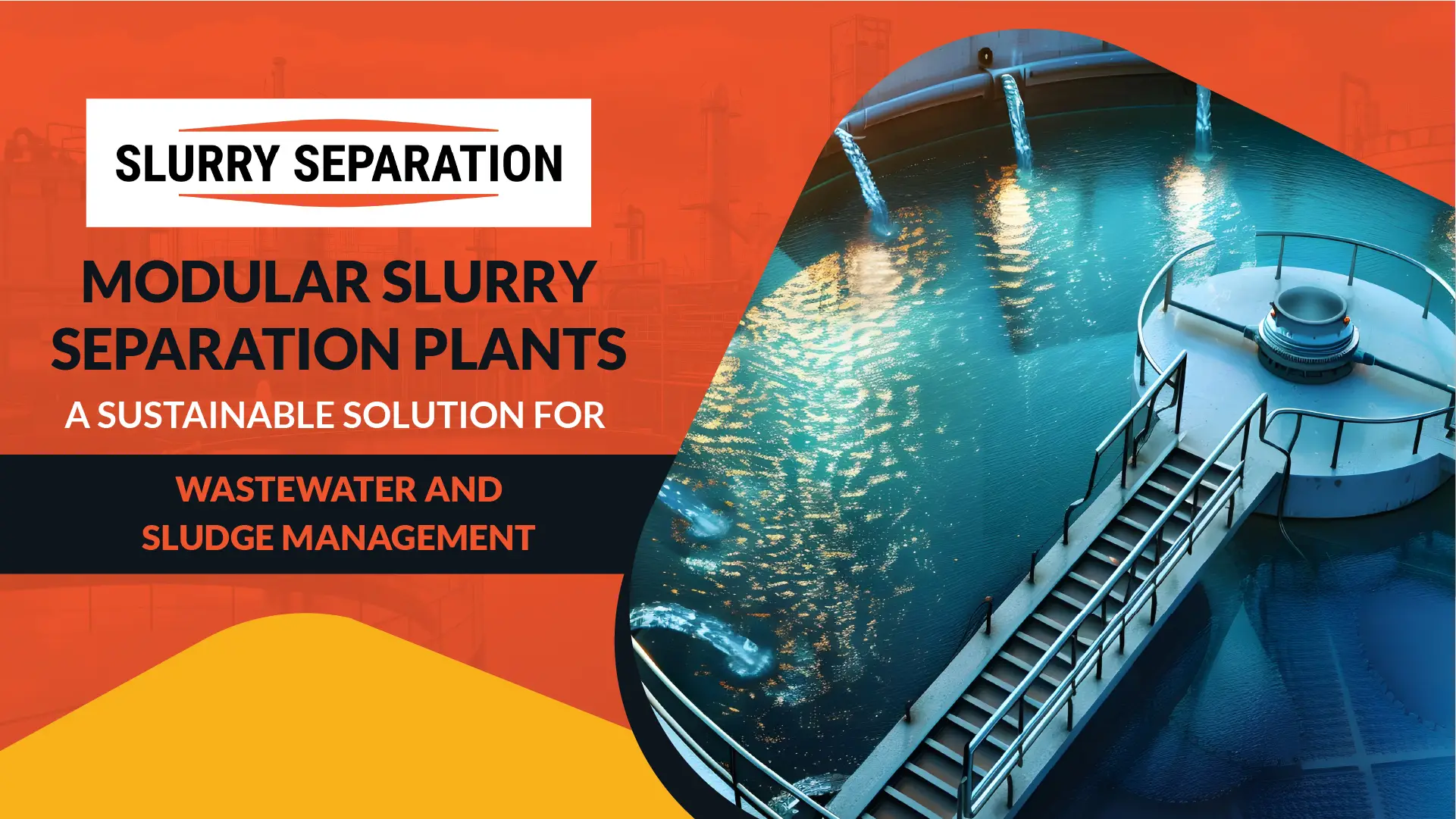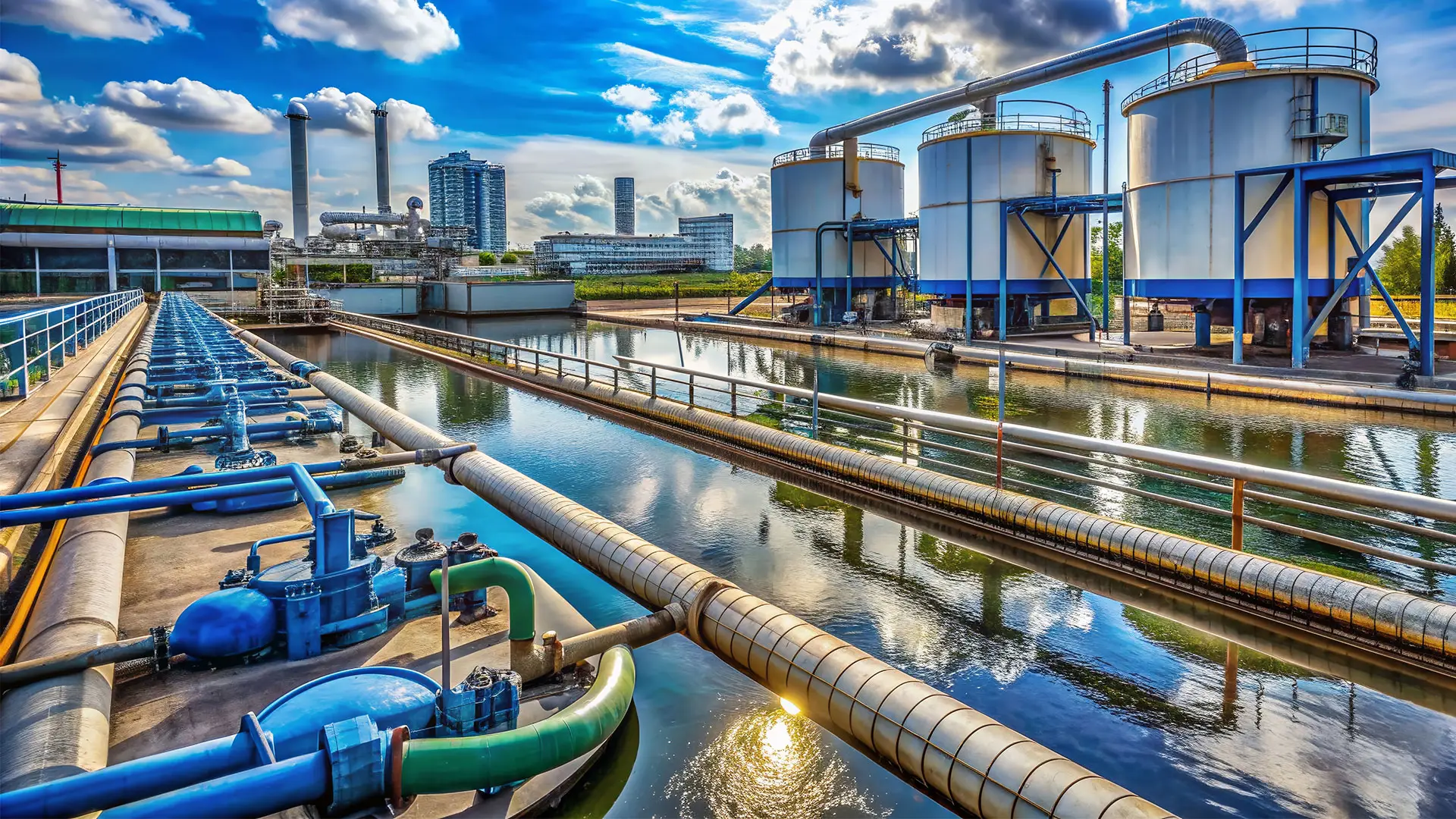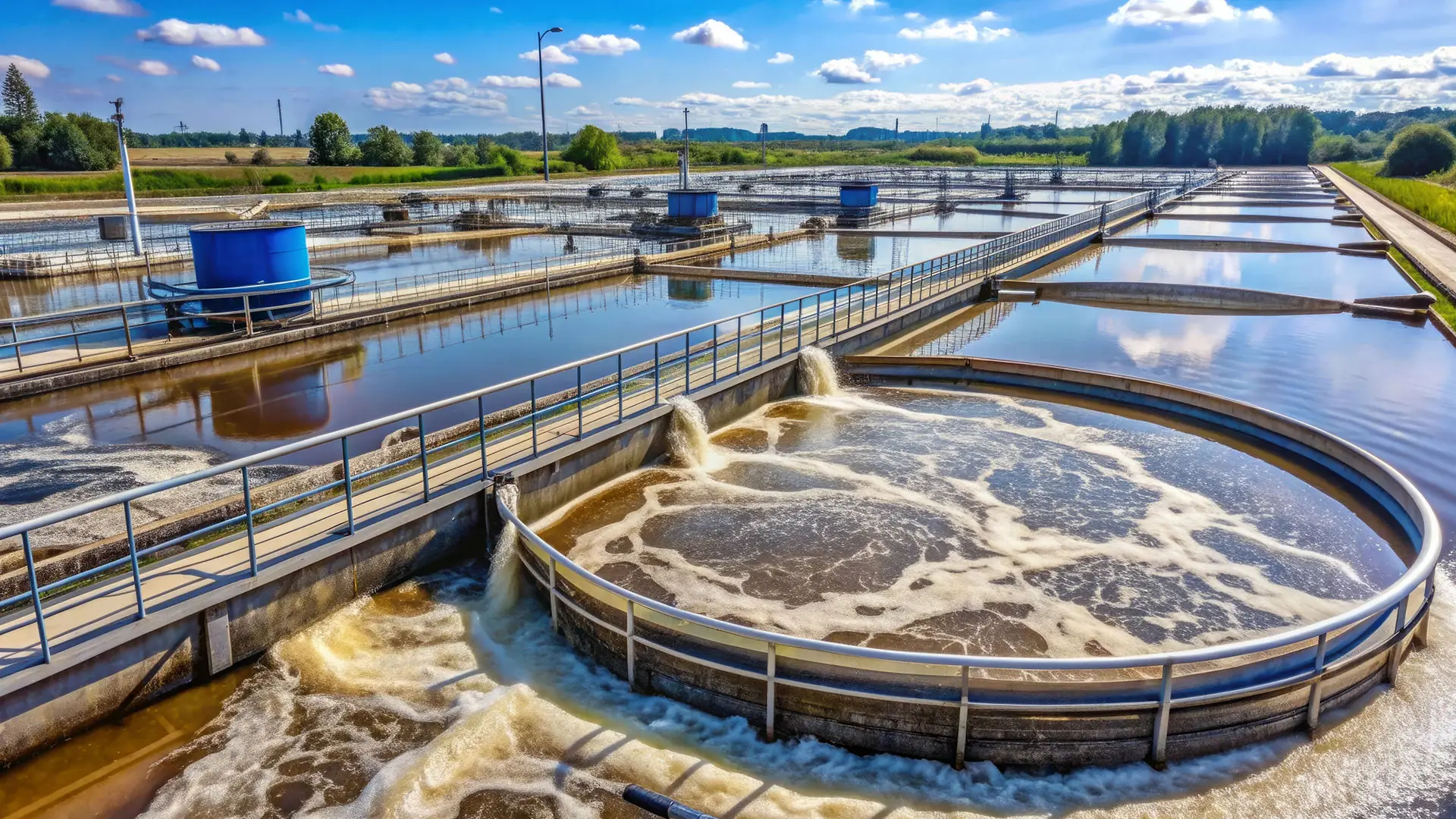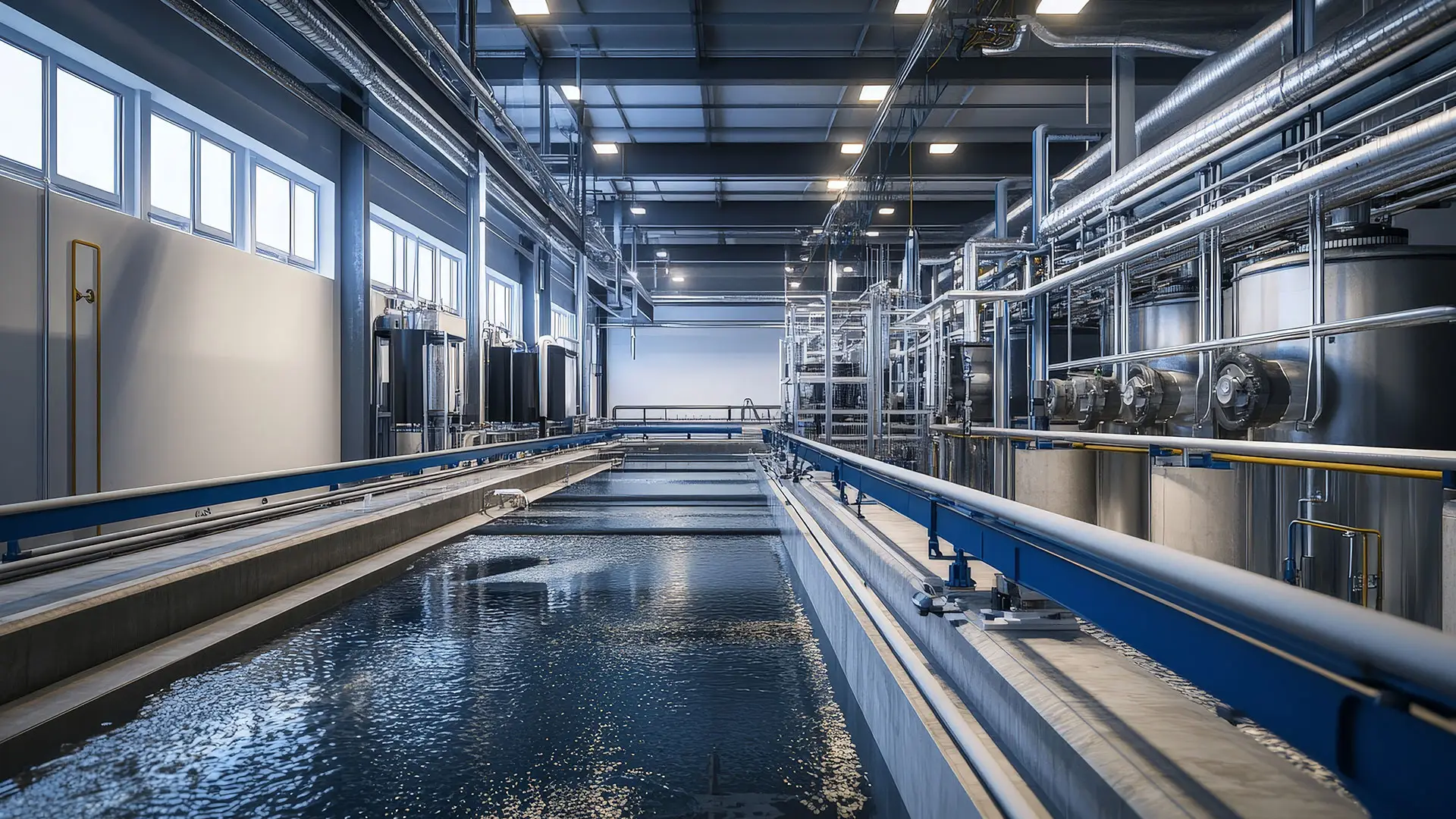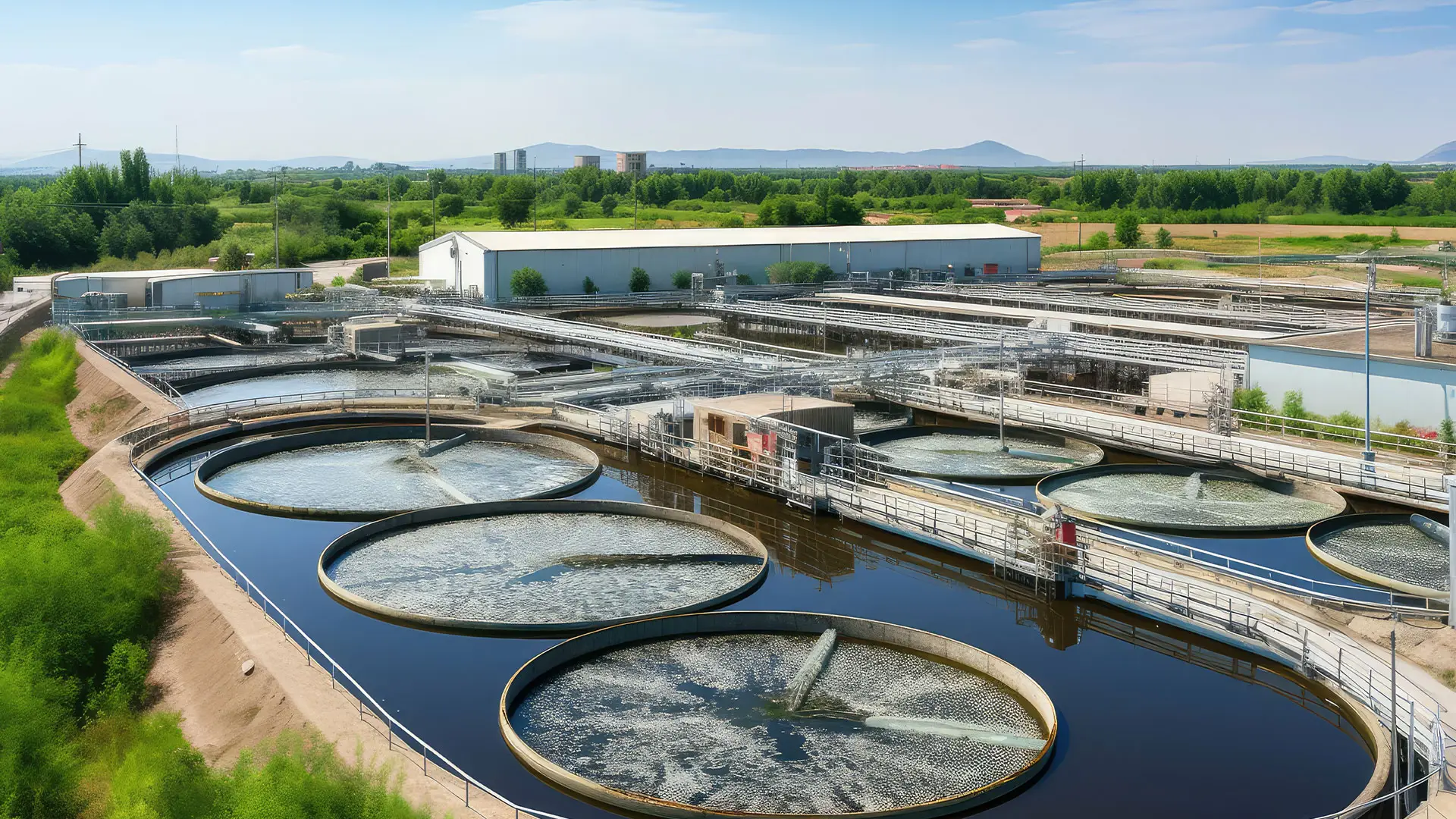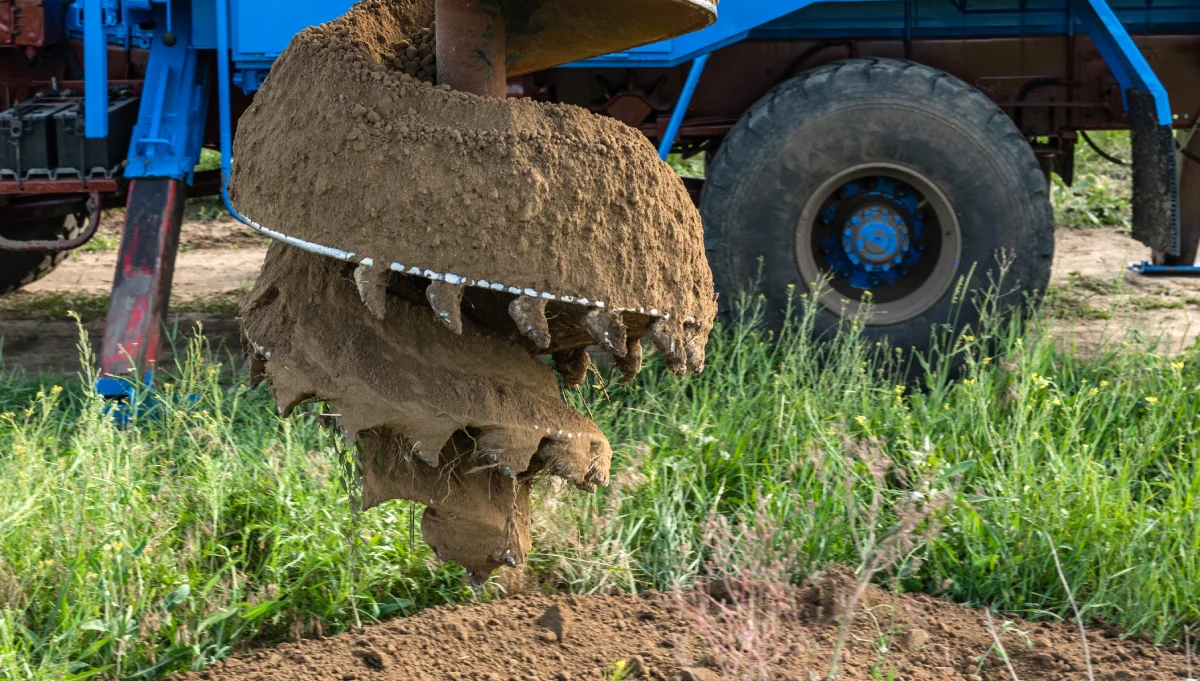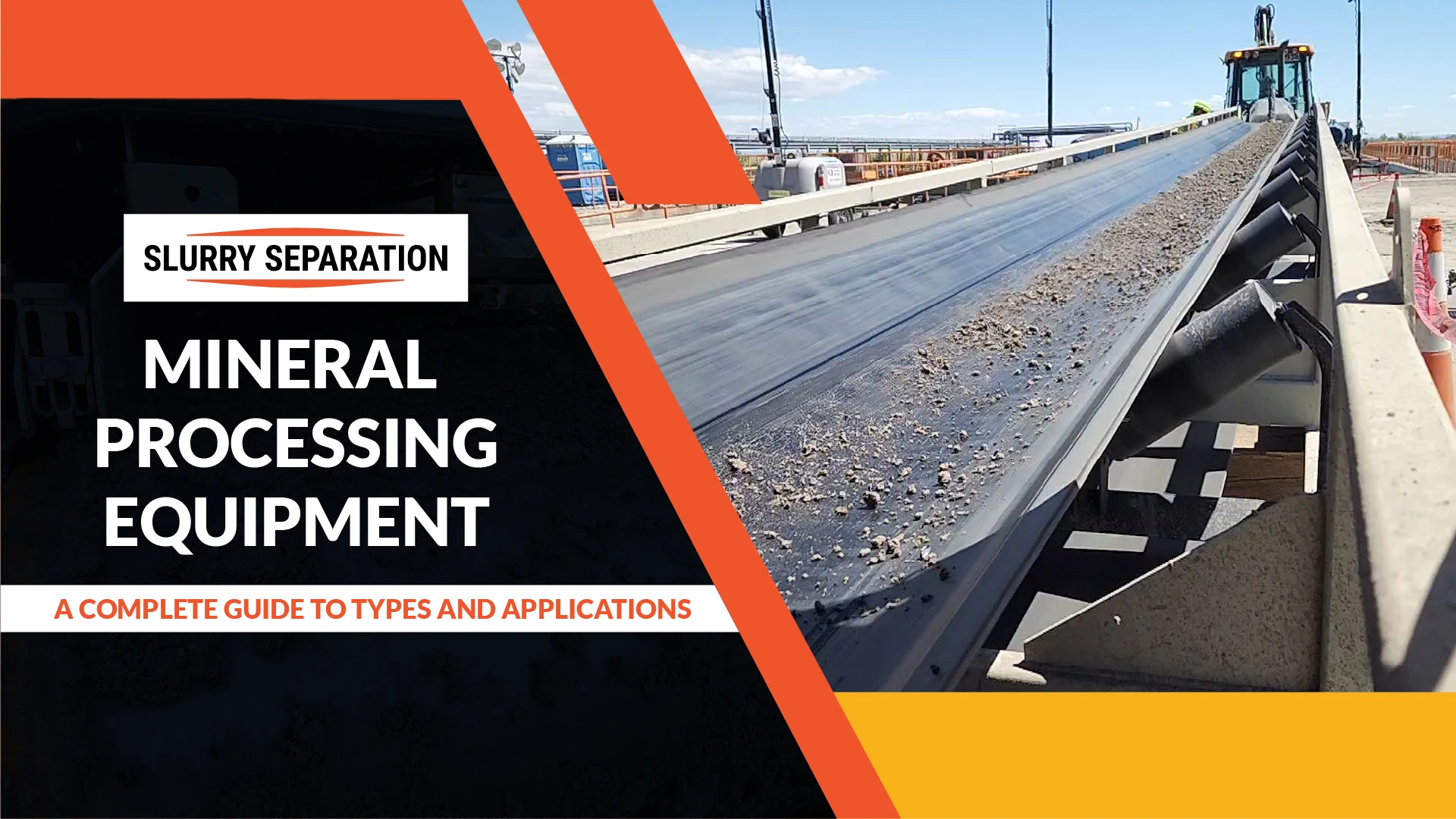- Understanding Slurry and Its Environmental Impact
- What are Modular Slurry Separation Plants?
- How Modular Plants Promote Sustainability
- Industries Benefiting from Modular Slurry Separation
- Key Benefits of Modular Slurry Separation Plants
- Challenges and Future Innovations in Modular Slurry Separation Plants
- How to Choose the Right Modular Slurry Separation Plant
- Conclusion
As global industrial activity grows, the challenges of managing wastewater and sludge are becoming increasingly complex. Urbanization, expanding industries, and agricultural intensification have generated massive volumes of wastewater and sludge, straining existing treatment systems. Stricter environmental regulations worldwide highlight the urgent need for efficient, sustainable management solutions.
Traditional treatment methods often fail to address the demands of modern industries. They lack scalability, cost-efficiency, and environmental compliance, leaving businesses searching for better alternatives. This is where modular slurry separation plants step in as game-changers. These innovative systems provide flexibility, reduce operational costs, and promote sustainability, making them a preferred choice for wastewater and sludge management.
A modular slurry separation plant can efficiently handle waste streams across industries, from agriculture to construction projects like microtunneling. With their ability to adapt to varying site conditions, they not only reduce waste but also enable resource recovery, such as water reuse and valuable solid recovery.
This article delves into the advantages of slurry separation plants, highlighting their environmental and operational benefits while exploring their critical role in promoting sustainable practices across industries. These systems are paving the way for efficient, eco-friendly wastewater management solutions.
Understanding Slurry and Its Environmental Impact
What is Slurry?
A slurry is a semi-liquid mixture of solids suspended in a liquid, typically generated as a byproduct of industrial, agricultural, and municipal activities. Its primary components include water, solid particles, and contaminants such as chemicals, organic matter, or heavy metals. The composition of slurry varies significantly depending on its source, making it a challenge for effective management.
Sources of Slurry:
- Industrial Processes: Activities such as manufacturing, mining, and oil and gas operations produce large volumes of slurry. For example, mining operations generate tailings, while oil and gas projects create drilling waste.
- Agriculture: Livestock manure and farm runoff are significant contributors to slurry generation. These often contain organic matter and nutrients that can be repurposed if treated properly.
- Municipal Waste: Wastewater treatment plants produce sludge, which is a type of slurry that must be processed efficiently to avoid environmental damage.
Environmental Impacts of Untreated Slurry:
When untreated, slurry poses severe risks to the environment:
- Contamination of Water Bodies: Slurry can seep into rivers, lakes, and groundwater, polluting these resources and harming aquatic life.
- Soil Degradation: Improper slurry disposal alters soil composition, reducing fertility and spreading harmful contaminants.
- Greenhouse Gas Emissions: Decomposing slurry in landfills or open spaces releases methane and other harmful gases, contributing to climate change.
Given these risks, a modular slurry separation plant is an essential solution for industries and municipalities. These plants can process slurry on-site, recover resources, and reduce waste volumes. For construction projects like microtunneling, modular slurry separation plants are particularly effective, as they can handle the unique challenges of slurry generated during excavation. With its adaptability, a slurry separation plant ensures compliance with environmental standards while promoting sustainability.
What are Modular Slurry Separation Plants?
A modular slurry separation plant is a specialized system designed to separate solids and liquids from slurry while promoting sustainability efficiently. These plants are composed of modular units that can be easily assembled, disassembled, and transported, making them highly versatile for various industries and project requirements. This flexibility is particularly advantageous for temporary or remote operations, such as construction projects involving microtunneling.
Key Components of a Modular Slurry Separation Plant:
- Hydrocyclones: Used to separate fine particles from liquids, ensuring effective solid-liquid separation.
- Decanter Centrifuges: Facilitate the separation of heavier solids from the liquid phase.
- Filter Presses: Further dewater solids to minimize waste volumes.
- Integrated Systems: Enable resource recovery by recycling water, treating wastewater, and repurposing solids.
How They Differ from Traditional Systems:
Unlike traditional centralized treatment plants, modular slurry separation plants offer several key advantages:
- Mobility and Flexibility: Their modular design allows them to be easily relocated, making them ideal for temporary or mobile operations.
- Cost-Effectiveness: They have lower installation and operational costs compared to large-scale facilities.
- Adaptability: They are well-suited for small-scale or remote projects, eliminating the need for extensive infrastructure.
A modular system is an innovative solution for industries that require sustainable and efficient slurry management systems. It can handle diverse slurry challenges.
How Modular Plants Promote Sustainability
A modular slurry separation plant offers innovative solutions to support sustainability through resource recovery, energy efficiency, waste reduction, and environmental compliance. These systems improve operational efficiency and align with global sustainability goals.
Resource Recovery
One of the standout features of a modular slurry separation plant is its ability to recover valuable resources:
- Water Reuse: The plant separates and treats water from slurry, allowing it to be reused in industrial processes. This significantly reduces freshwater consumption, which is critical for industries like mining and microtunneling.
- Solid Recovery: Solids extracted from slurry can be repurposed. Organic solids can be used as fertilizers, while valuable minerals can be recovered for reuse in industrial applications.
Energy Efficiency
Compared to traditional systems, modular plants are optimized for energy usage. Modern designs often integrate renewable energy sources, further reducing their carbon footprint and enhancing sustainability.
Waste Reduction
By efficiently separating solids and liquids, modular plants reduce the volume of sludge that requires disposal. This lowers transportation costs and minimizes the environmental footprint of waste management processes.
Environmental Compliance
A slurry separation plant ensures that wastewater is treated to meet stringent environmental regulations. By reducing pollutants and recovering resources, industries can avoid penalties while promoting sustainable operations.
Industries Benefiting from Modular Slurry Separation
A modular system provides versatile solutions for industries that generate significant slurry and wastewater. Its adaptability and efficiency make it an essential tool for addressing unique challenges across various sectors.
- Mining and Mineral Processing
Modular slurry separation plants efficiently separate tailings while recovering valuable ores and minerals. They also reduce water consumption, allowing mining operations to reuse treated water ensuring improved environmental compliance. - Construction and Infrastructure Projects
Construction activities such as tunneling, piling, and microtunneling generate large amounts of slurry. Modular plants manage this waste effectively, providing on-site treatment to minimize logistical challenges and meet project timelines. - Agriculture
In agriculture, modular plants treat livestock manure and farm runoff. The solids recovered can be repurposed as organic fertilizers or used for bioenergy production, promoting circular farming practices. - Municipal Wastewater Treatment
For small towns and rural areas without centralized treatment facilities, a slurry separation plant offers an ideal solution. These plants handle sludge dewatering and wastewater treatment effectively on-site, reducing infrastructure requirements. - Oil & Gas Industry
In the oil and gas sector, modular slurry separation plants manage drilling mud and contaminated wastewater. Their advanced systems reduce environmental risks associated with hydrocarbon-laden waste, ensuring sustainable operations.
With their flexibility and efficiency, modular systems cater to diverse industry needs while promoting resource recovery and sustainability.
Key Benefits of Modular Slurry Separation Plants
A modular slurry separation plant offers numerous advantages, making it ideal for industries that require efficient and sustainable waste management solutions.
Cost-Effectiveness
Modular slurry separation plants are more cost-effective than traditional centralized treatment facilities. They require lower capital expenditures and significantly reduce transportation and disposal costs for treated sludge. These cost savings are particularly beneficial for industries that generate high volumes of slurry.
Scalability and Flexibility
The modular design allows these systems to be customized and scaled to meet specific project requirements. Whether for large-scale mining operations or smaller construction projects like microtunneling, modular plants can adapt easily. Additionally, their mobility enables relocation to new sites as needed, offering unmatched flexibility.
Ease of Installation and Maintenance
Prefabricated modules ensure quick and hassle-free installation, reducing downtime. Standardized components simplify maintenance, making modular slurry separation plants easier to manage compared to traditional systems.
Compliance and Risk Mitigation
A slurry separation plant ensures adherence to stringent environmental regulations, reducing the risk of penalties. By effectively treating slurry and recovering valuable resources, these plants minimize liabilities associated with improper waste disposal.
With their cost efficiency, adaptability, and compliance benefits, modular slurry separation plants are essential for industries aiming to improve operational sustainability while reducing their environmental impact.
Challenges and Future Innovations in Modular Slurry Separation Plants
While a modular slurry separation plant is a game-changer in waste management, industries must address challenges to maximize its benefits.
Current Challenges
- Initial Perception: Although modular slurry separation plants are cost-effective in the long run, some industries view the initial investment as high. This misconception can deter companies from adopting these innovative systems.
- Skill Requirements: Operating and maintaining these plants requires skilled technicians, which can be challenging in remote areas or industries new to slurry management technologies. For example, projects like microtunneling may face difficulties in sourcing trained personnel for on-site operations.
Future Innovations
The future of modular slurry separation plants is promising, with several advancements on the horizon:
- AI and IoT Integration: By incorporating artificial intelligence and IoT, these plants can enable real-time monitoring and process optimization, improving efficiency and reducing operational costs.
- Renewable Energy: The development of systems powered entirely by solar or wind energy will significantly enhance sustainability and reduce dependency on fossil fuels.
- Enhanced Materials: Durable, corrosion-resistant materials will extend the operational life of these plants, making them even more reliable and cost-effective.
By addressing current challenges and embracing innovations, a slurry separation plant will continue to evolve as an essential tool for sustainable waste and resource management.
Modular Plants vs. Traditional Solutions
When comparing modular plants to traditional treatment systems, the benefits of a modular slurry separation plant become evident across several key factors:
Cost: Modular systems have lower upfront and operational costs compared to centralized treatment facilities. Their prefabricated design reduces installation expenses and long-term maintenance costs.
Environmental Impact: A modular slurry separation plant is built with sustainability in mind. It minimizes waste, reduces pollution, and enables resource recovery, making it an environmentally friendly alternative to traditional systems.
Versatility: Modular plants can be adapted to various industries, such as mining, agriculture, and microtunneling, and scaled to meet project-specific needs. Their mobility allows relocation to remote or temporary project sites with ease.
Real-world applications, including remote mining operations and municipal wastewater management, demonstrate the effectiveness and value of modular systems. With their adaptability and efficiency, modular plants are transforming how industries manage waste. By replacing outdated methods, a slurry separation plant offers a more sustainable and cost-effective solution for modern waste management challenges.
How to Choose the Right Modular Slurry Separation Plant
Selecting the right modular slurry separation plant requires careful consideration of your project’s unique needs and constraints. These plants are versatile and highly effective, but choosing the right one ensures maximum efficiency and sustainability.
Factors to Consider:
- Type and Volume of Slurry: Understanding the composition and volume of slurry to be treated is crucial. Different industries, from mining to microtunneling, generate various types of slurry, each with specific treatment requirements.
- Desired Outcomes: Determine whether the focus is on water recovery, solids reuse, or a combination of both. A well-designed modular slurry separation plant should meet your specific goals while optimizing resource recovery.
- Budget and Capacity: Assess your financial and operational needs. Modular systems offer scalability, so you can invest in a plant that fits your current requirements and expand later as needed.
Partnering with Reliable Suppliers:
Choosing a reputable supplier is critical for success. A trusted partner will provide high-quality equipment, tailored solutions, and reliable after-sales support. They can help you customize a modular slurry separation plant that aligns with your industry needs, whether for agriculture, mining, or microtunneling projects.
Conclusion
A modular slurry separation plant offers a cutting-edge, sustainable solution for wastewater and sludge management. These systems effectively tackle modern industry challenges by providing flexibility, enabling resource recovery, and ensuring compliance with environmental regulations. Their adaptability allows them to be utilized across various industries, from mining to microtunneling, where efficient slurry management is essential.
By adopting modular slurry separation plants, industries can improve operational efficiency, reduce overall costs, and minimize their environmental impact. These plants help meet stringent regulatory requirements and promote sustainable practices by recovering valuable resources and reducing waste.
Investing in a slurry separation plant is a step toward a greener future. It offers industries an opportunity to optimize processes while contributing to global sustainability efforts.

